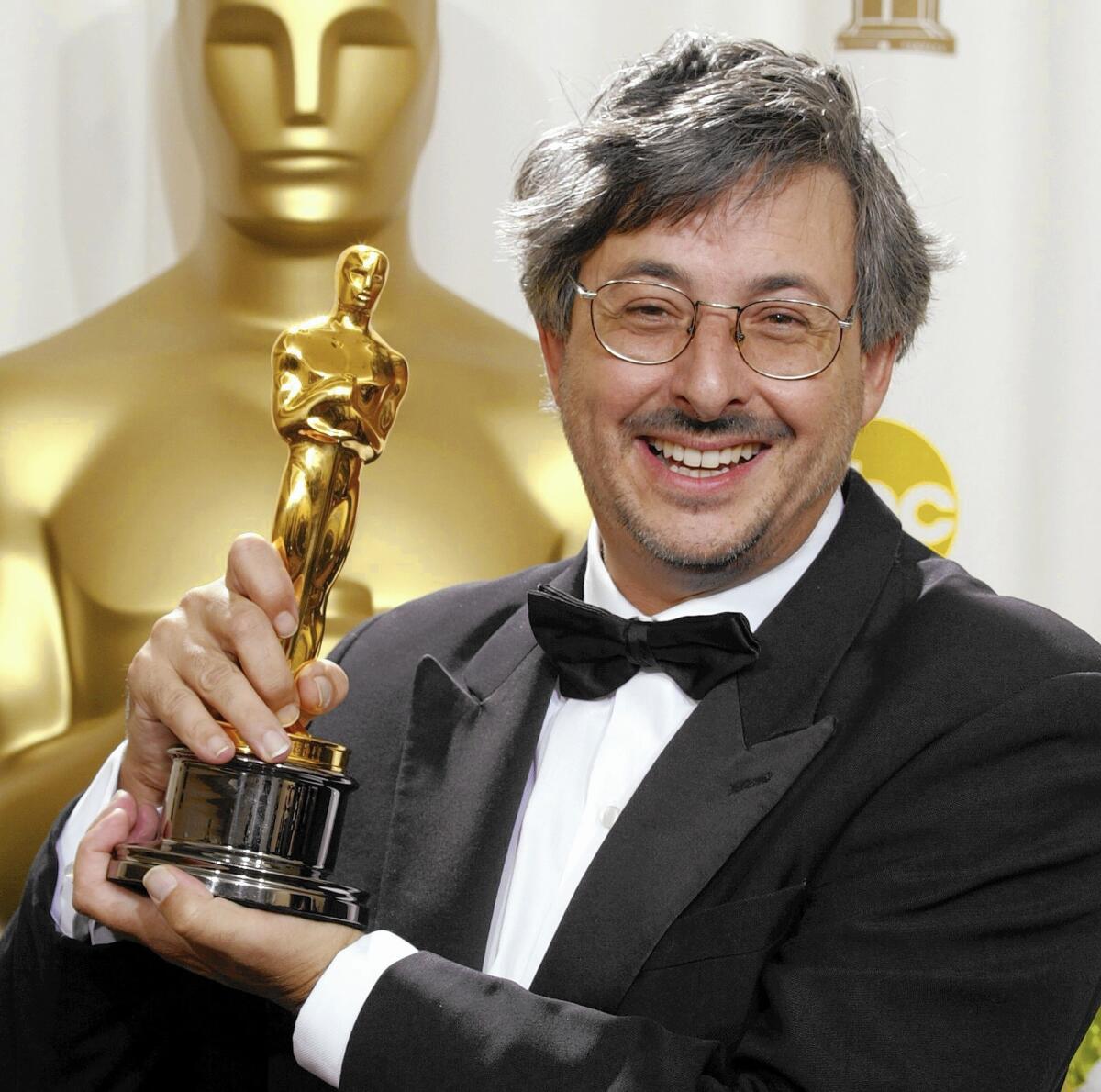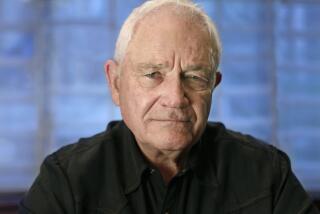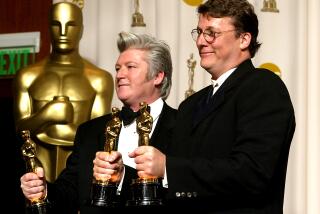Andrew Lesnie dies at 59; ‘Lord of the Rings,’ ‘Babe’ cinematographer

Andrew Lesnie, an Australian cinematographer best known for his work on two very different kinds of fantasy films — “Babe,” about a talking pig, and the epic trilogy based on J.R.R. Tolkien’s “Lord of the Rings” — has died. He was 59.
Lesnie won an Oscar for cinematography in 2002 for “The Lord of the Rings: The Fellowship of the Ring,” the first installment of director Peter Jackson’s adaptation of the Tolkien books.
His death Monday from a serious heart ailment was announced by the Australian Cinematographers Society.
Lesnie worked with Jackson on all six “Lord of the Rings” and “Hobbit” films, as well as on Jackson’s 2005 remake of “King Kong” and adaptation of the Alice Sebold novel “The Lovely Bones.”
“Andrew created unforgettable, beautiful images on screen, and he did this time and again, because he only ever served what he believed in — he was his own artist, separate from me, but always working generously to make what we were trying to create together better,” Jackson said on his Facebook page.
Lesnie shot the three “Lord of the Rings” movies during a marathon 15-month shoot in New Zealand between mid-1999 and late 2000. He helped create a complex color scheme that defined each realm of Middle-earth with its own palette.
Critics raved about the visual richness of the films, particularly the first installment, which was the cinematographer’s first collaboration with Jackson. Lesnie, wrote Salon.com reviewer Stephanie Zacharek, “shoots the billowing, grassy hills so that they sing out with love for [the English] countryside — no matter that it wasn’t filmed there: Through Lesnie’s lens New Zealand is its spiritual twin.”
Jackson once said he was drawn to Lesnie because of his sophisticated approach to shooting “Babe,” the 1995 movie about an orphaned pig adopted by an eccentric farmer, and its 1998 sequel, “Babe: Pig in the City.”
“I thought they looked amazing, the way he’d used backlight and the sun and natural light to create a very magical effect,” Jackson once told an interviewer. “And ‘Babe’ had that larger-than-life feel about it that I wanted.”
More recently, Lesnie worked on the Australian war drama “The Water Diviner,” now in limited release. Russell Crowe, who stars in and directed the film, called his director of photography the “master of the light” in a tweet this week.
Lesnie’s other credits include director Rupert Wyatt’s “Rise of the Planet of the Apes”; the Will Smith film “I Am Legend,” directed by Francis Lawrence; and “The Last Airbender,” directed by M. Night Shyamalan.
Born in Sydney in 1956, Lesnie studied cinematography at the Australian Film, Television and Radio School, graduating in 1979. One of his first major jobs directing photography was for “The Comeback” a 1980 documentary about Arnold Schwarzenegger’s attempt to reclaim the Mr. Olympia title after a long absence from competitive bodybuilding.
In 1981 Lesnie was the cameraman on a documentary about the making of “Mad Max 2: The Road Warrior,” the post-apocalyptic thriller directed by George Miller, who later would hire Lesnie for the “Babe” films.
He was twice named Cinematographer of the Year by the Australian Cinematographers Society, including in 1996 for “Babe.”
Lesnie once explained why that popular family film, with its cast of live and animatronic animals, was such a challenging project.
“It was important not to turn it into a blatant fantasy and it was also important not to turn it into a cartoon,” Lesnie said of “Babe” in a 1999 Weekend Australian magazine interview. “I always said it was a world just left of reality. I tried to exploit all the natural light but just provide some small enhancement somewhere in the frame that said to people: ‘It’s not quite real.’”
His survivors include his partner, Bronwen, and his sons, Jack and Sam.
The Associated Press contributed to this story.
Twitter: @ewooLATimes
More to Read
Start your day right
Sign up for Essential California for the L.A. Times biggest news, features and recommendations in your inbox six days a week.
You may occasionally receive promotional content from the Los Angeles Times.







